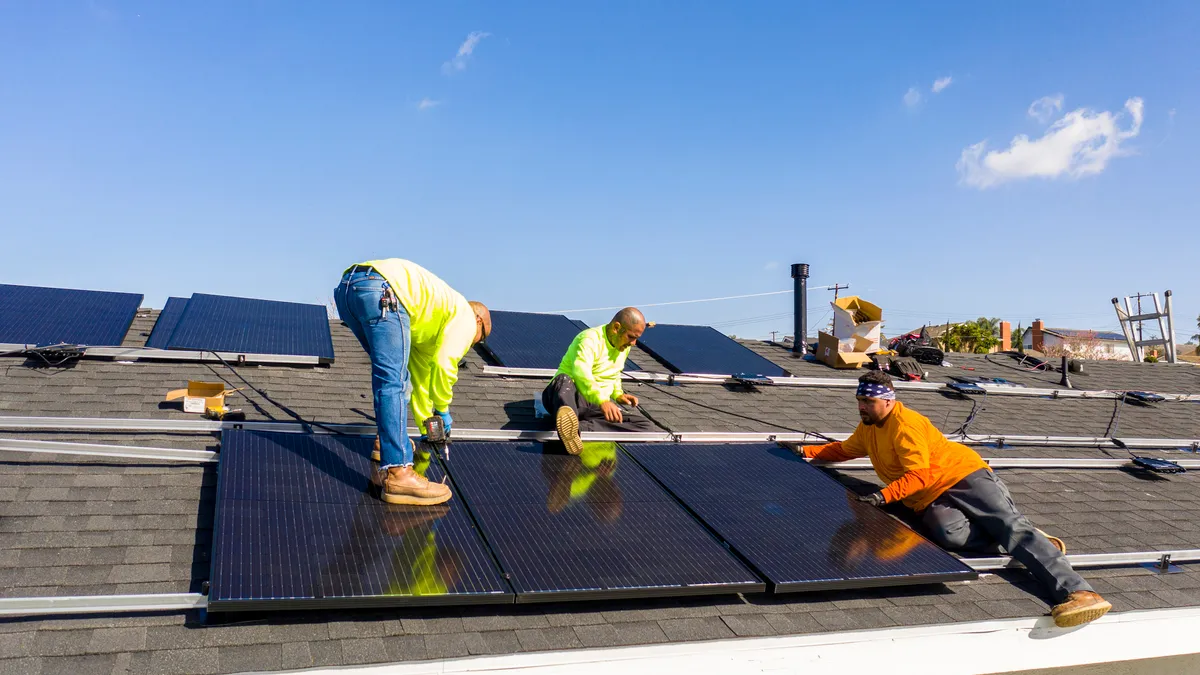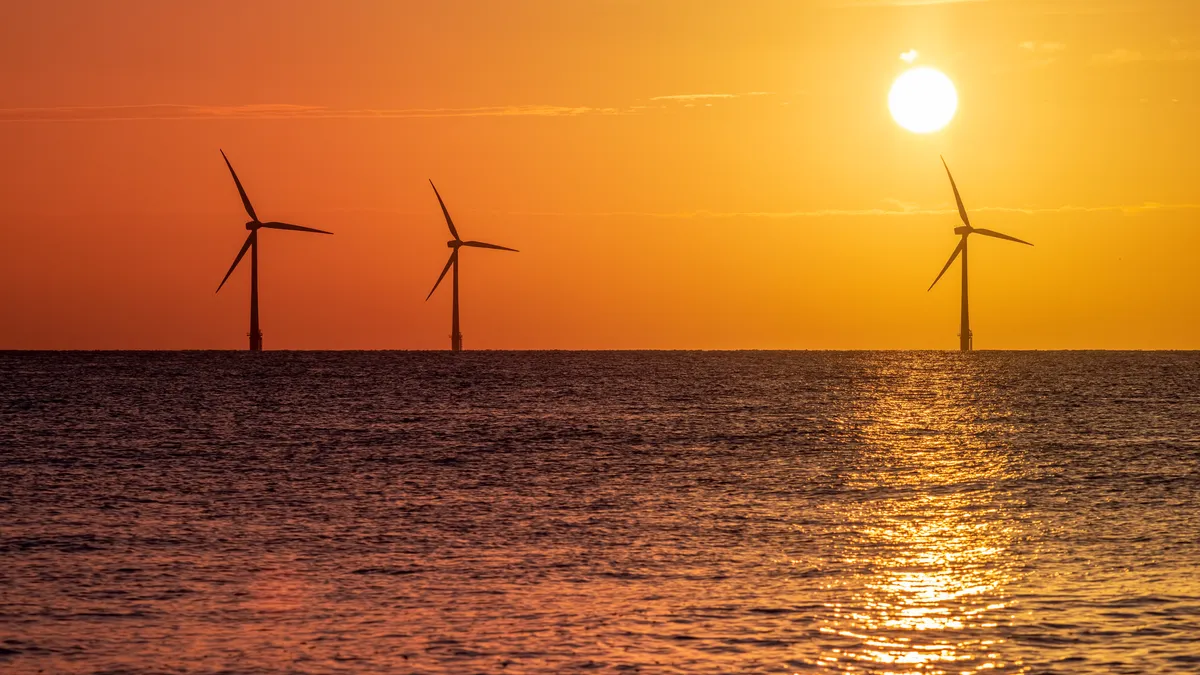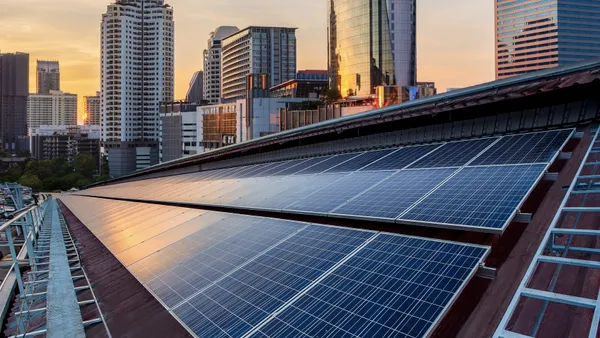Amid stiff headwinds for utility-scale renewables and gas, electricity system experts say utilities, industrial companies and other heavy power consumers may find some relief in a cheaper, faster and increasingly scalable solution: distributed generation and flexible loads, known as distributed energy resources, or DERs, that can be batched into virtual power plants or multi-megawatt demand response programs and deployed faster than utility-scale assets.
“There is an awareness that, oftentimes, distributed solar and distributed storage can come online much more quickly than larger resources … and a recognition of the role [they] can play in providing energy and in some cases capacity resources,” said Sean Gallagher, senior vice president of policy for the Solar Energy Industries Association.
Then again, nothing in the energy world is easy these days.
Earlier this month, President Donald Trump announced sweeping tariffs on imports from most U.S. trading partners. The targeted countries included major suppliers of solar panels, batteries and high-voltage electrical components, such as Vietnam (46%) and China (145% or more). Trump later announced a 90-day reduction to 10% for most countries other than China.
Distributed generation and storage assets may stand to benefit as developers look to sidestep bulk grid constraints, but they are not immune to supply chain challenges, particularly for larger projects, said Ravi Manghani, senior director of strategic sourcing at Anza Renewables, an energy data provider.
A perfect storm for utility-scale renewables?
Trump’s “Liberation Day” announcement was just the latest setback for the clean energy industry, which has been under siege since Jan. 20 despite providing 93% of new generating capacity in 2024. In a series of executive orders on his first day in office, Trump halted federal onshore and offshore wind permitting, withdrew all federal waters from offshore wind leasing, and declared an “energy emergency” that appeared to favor thermal and other high capacity-factor generating resources over wind, solar and batteries. A subsequent federal funding freeze, later partially rescinded, threw previously-authorized support for clean energy projects into limbo. Meanwhile, anti-renewables bills are proliferating in Texas, Oklahoma and other Republican-controlled states.
With the fate of Inflation Reduction Act tax credits up in the air as the U.S. Congress looks to offset an estimated $4.2 trillion in tax cuts this year, the clean energy sector could be in for more pain. Fully repealing the IRA’s technology-neutral Section 45Y investment and Section 48E production tax credits this year would reduce wind and solar deployments by about 50% over the next decade, The Brattle Group and ConservAmerica said in February.
That sort of pullback could jeopardize U.S. industrial growth, which is a driving factor in an expected 50% increase in electricity demand by 2035, ConservAmerica said. With new gas turbine costs rising fast and production capacity tied up until 2030, according to NextEra CEO John Ketchum, it may not be feasible to make up the shortfall with new fossil generation.
Because the U.S. already has tens of gigawatts of DERs that could be aggregated into VPPs within months, rather than years, some electricity system experts see smaller-scale resources as a potential stopgap should utility-scale renewables and storage development falter.
Enabling a more flexible grid
“DER” is a catch-all term for a broad range of generation resources, from residential solar arrays of a few kilowatts to grid-connected or behind-the-meter installations of 10 MW or more, and potentially flexible loads such as thermostats, water heaters and electric vehicles.
The U.S. has well over 100 GW of DERs that technically could be aggregated into VPPs and traditional demand response programs, but over 80% of that capacity is not, Wood Mackenzie said last year. Still, the firm identified 1,459 VPP deployments operating across 321 monetized market, utility and energy retailer programs.
Earlier this year, the Department of Energy pegged current U.S. VPP capacity at about 30 GW and said that figure could scale to 80 GW to 160 GW by 2030.
Utilities and state policymakers increasingly see the value in VPPs and DER aggregations, according to a February report from the NC Clean Energy Technology Center and the Smart Electric Power Alliance that catalogued more than 100 policy actions last year in 38 states and the District of Columbia. Many of those actions aim to harness the United States’ rapidly-growing distributed battery capacity or deploy sophisticated VPPs that use multiple categories of DERs, NCCETC Managing Director of Policy and Markets Autumn Proudlove said earlier this year.
In a flipbook released last year, RMI called out particularly innovative, multi-resource VPPs like those run by Puget Sound Energy in Washington (smart thermostats, behavioral load shaping, electric vehicles, water heaters and interruptible loads), Portland General Electric in Oregon (batteries, water heaters, behavioral load shaping and interruptible loads) and National Grid in New England (smart thermostats, batteries and technology-agnostic demand response).
Clean-energy groups are actively pushing supportive state policy and developing standardized templates for simpler, more efficient VPP programs, both key recommendations from last year’s Wood Mackenzie report.
“There’s a lot of enthusiasm around VPPs,” SEIA’s Gallagher said. “We are trying to templatize them so that they’re not as bespoke [and] are more straightforward to explain to utilities and customers.”
Though utility interest is “uneven” across the country, with some embracing DERs and others more resistant, eye-catching recent load growth forecasts help make the case, Gallagher said.
Speed and scale
In January, SEIA released a roadmap for 10 million distributed energy storage installations and 700 GWh of total deployed storage capacity by 2030. Utilities, too, are showing more ambition on DERs with plans for bigger, more sophisticated distributed resource aggregations.
In a February deal touted by Utah Gov. Spencer Cox, R, Rocky Mountain Power and distributed energy solutions provider Torus said they would collaborate on a commercial-and-industrial VPP that could provide up to 70 MW of flexible, behind-the-meter capacity by the middle of 2026.
“It’s no longer in question whether [this] is a path forward,” Torus CEO Nate Walkingshaw said in February. “[VPPs] can be seen at the same size, scale, quality and reliability as monolithic grid-tied architecture and are 100% viable today.”
In a regulatory filing in August, Xcel Energy’s Minnesota subsidiary proposed deploying and aggregating 440 MW of distributed solar and 400 MW of distributed storage to create what would likely be one of the United States’ largest VPPs.
“Xcel Energy believes distributed capacity can complement our existing plans for additional utility-scale renewable and firm dispatchable generation … [with] benefits including continued reliability, economic growth and providing our customers more options to adopt clean energy technologies,” Xcel spokesperson Josiah Mayo said in an email.
Meanwhile, utilities across the U.S. are working with developers to install larger-scale distributed energy resources with an eye to improving local and regional resilience.
In California, San Diego Gas & Electric partnered with EES and Mitsubishi Power Americas joint venture Prevalon to deploy multiple community microgrids totaling 180 MWh, and the company is now pursuing “half a dozen” similar opportunities right now, Prevalon President and CEO Tom Cornell said.
“We’ve seen a lot more utility inquiries in the past six to 12 months,” he said.
The value proposition for distributed batteries and firm generation is especially strong in regions where the grid is less reliable due to infrastructure challenges or weather-related risk, such as western North Carolina — hit hard by two hurricanes in 2024 — and other swaths of vertically-integrated utility territories across the Southeast, where developable land is abundant, Cornell said.
In those territories, a typical 10-MW, 40- to 60-MWh system might take 12 months to site and permit, with equipment procurement happening in parallel and construction and commissioning taking a matter of months afterward, according to Cornell.
The Southeastern utilities “move especially fast … they understand that they can move quicker on these than any other resource,” he said.
Questions remain
Despite clear advantages over larger, less flexible, slower-to-deploy resources, DERs aren’t immune from the economic and policy uncertainty roiling the electricity sector, experts say.
California’s NEM 3.0 net metering tariff, effective for residential solar and storage systems that entered the state’s interconnection queue after April 14, 2023, dramatically reduced solar-only installations while boosting battery attachment rates. Until more independent system operators implement rules consistent with FERC Order 2222 and additional states enact policies that capture the full value of distributed generation and storage, the residential segment could see muted growth on a national level, Anza Renewables’ Manghani said.
State-level policy could also temper growth in the fast-growing community solar segment following a record-breaking 1.7-GW year in 2024, according to Wood Mackenzie data. Cumulative U.S. deployments reached 8.6 GW at the end of 2024, Wood Mackenzie said.
But a closer look at the numbers shows disproportionate contributions from a handful of pro-solar states — with Illinois, New York and Maine accounting for 83% of total capacity deployments last year — and policy uncertainty in emerging state markets as more mature markets saturate.
“Emerging markets have been slow to ramp up and program size caps limit the potential for growth in these states to make up for declines in larger markets,” Wood Mackenzie research analyst and lead report author Caitlin Connelly said in February. The upshot is an uncertainty band — as much as 40% to the downside and 37% to the upside — around Wood Mackenzie’s base case of 15 GW in cumulative deployments by 2029.
Cost is another concern for smaller-scale energy resources, Manghani said. For example, while the cost gap between distributed and utility-scale storage continues to close amid fierce supplier competition, “utility-scale projects still benefit from superior economies of scale, revenue generation market structures and financing advantages,” he said.
And Manghani emphasized that, like their bulk counterparts, distributed generation and storage systems and components are at least somewhat exposed to supply chain challenges.
“Ultimately, price trends will depend on policy shifts, manufacturing capacity expansion and how quickly suppliers adjust to demand,” he said.





















